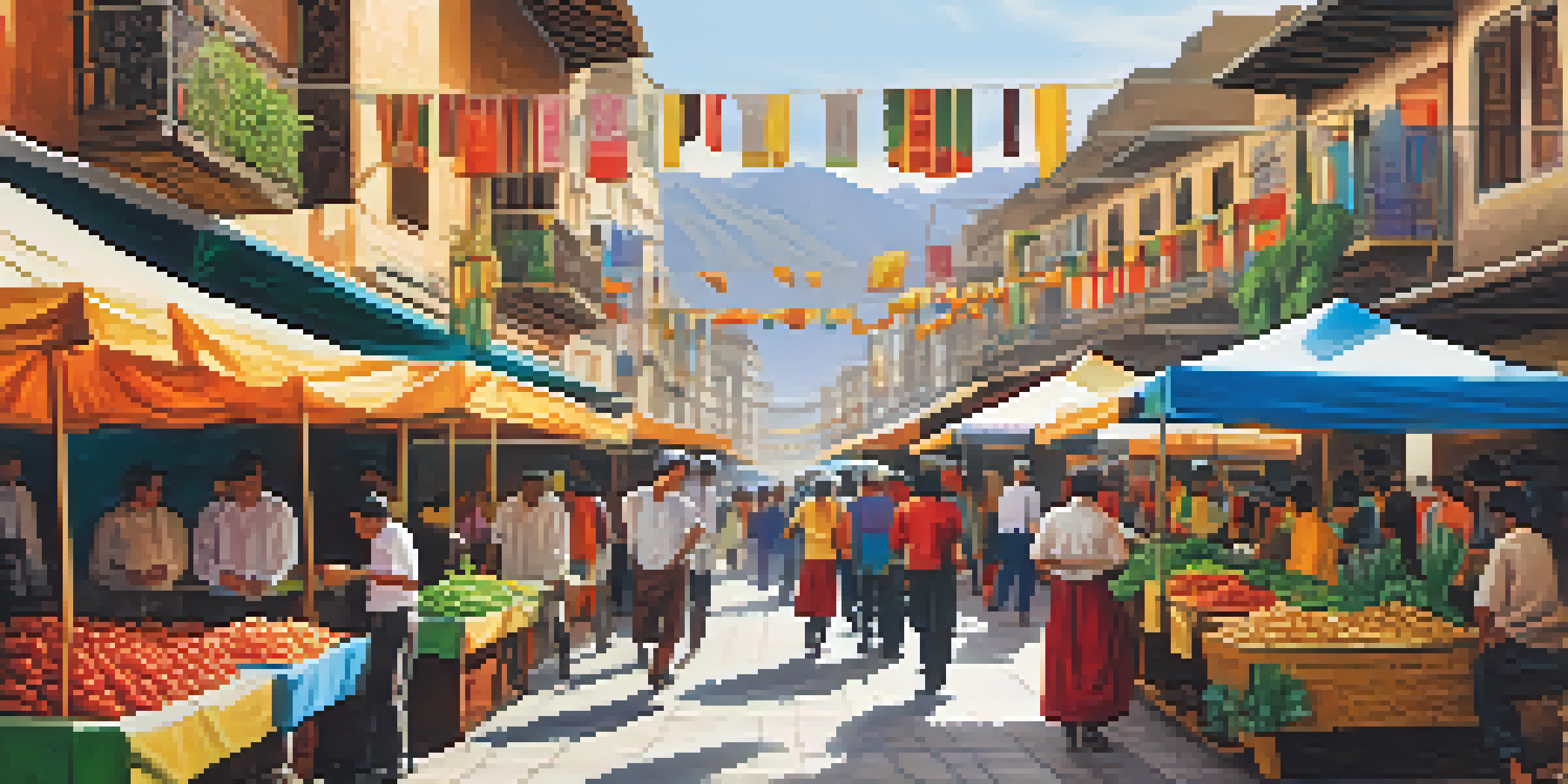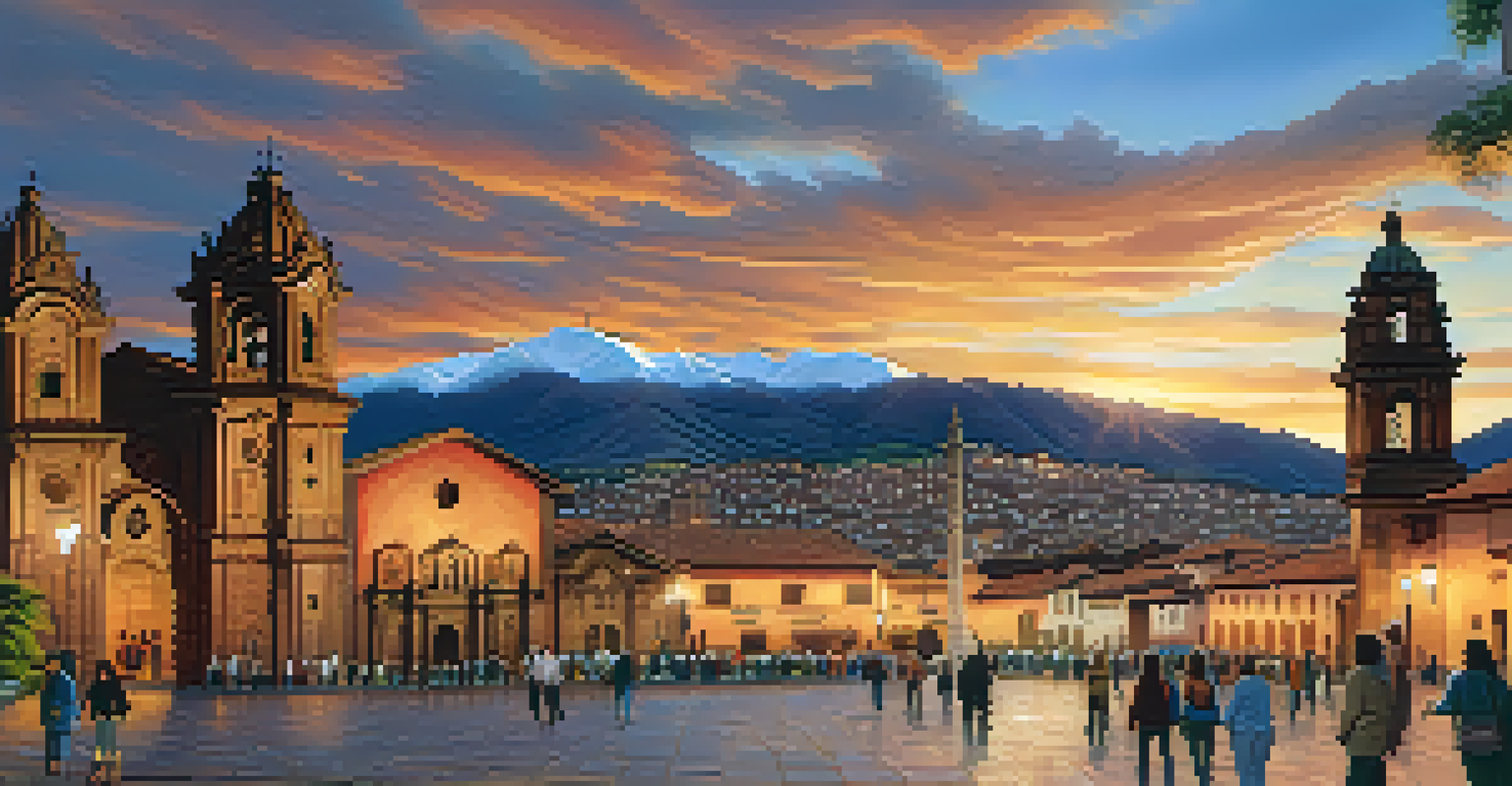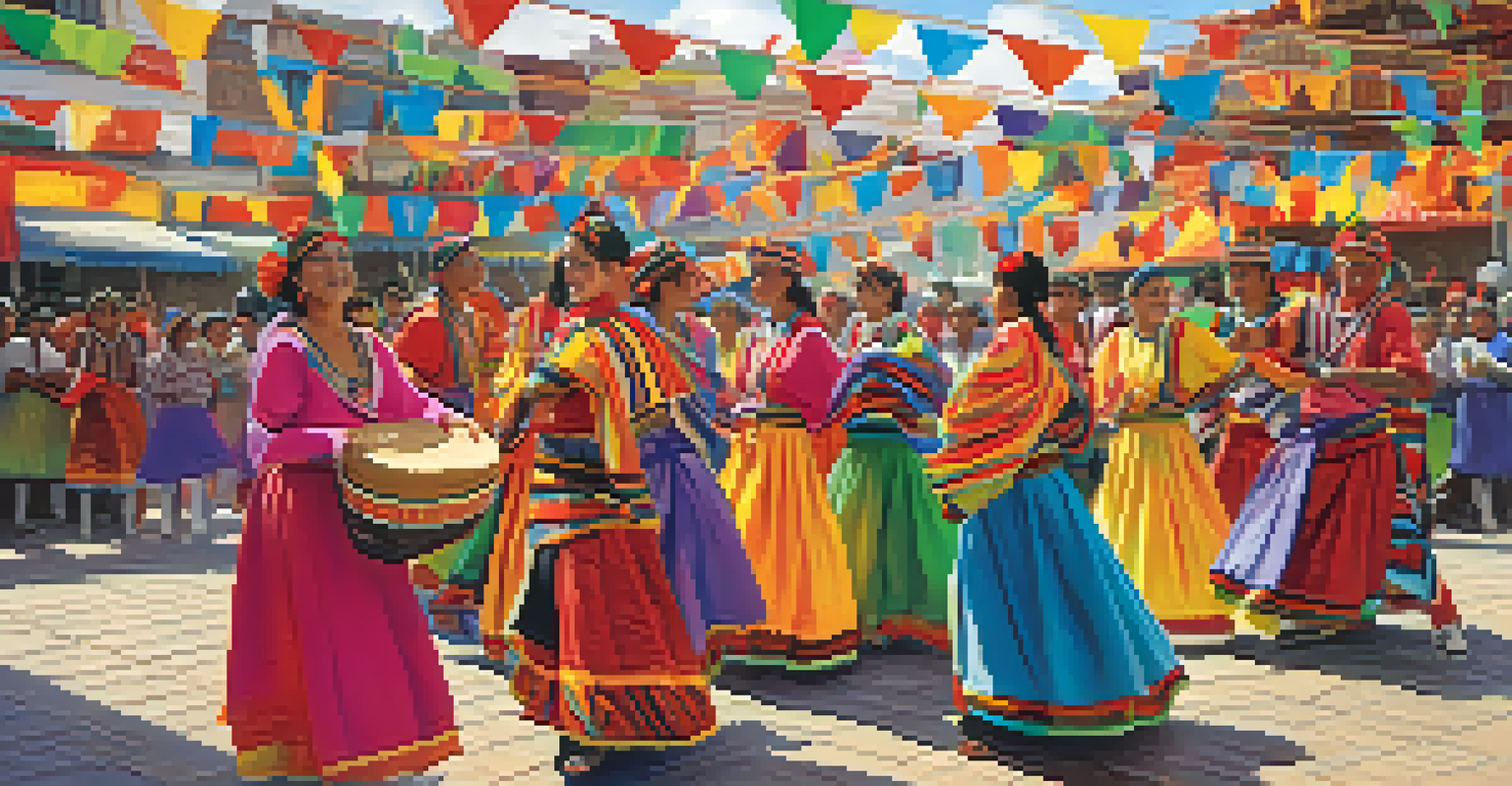The Impact of Urban Tourism on Local Communities in Peru

Understanding Urban Tourism: A Definition and Context
Urban tourism refers to the travel and exploration of cities, focusing on their unique cultural, historical, and social offerings. In Peru, cities like Lima and Cusco attract millions of visitors each year, drawn by their rich heritage and vibrant urban life. This type of tourism differs from rural tourism, which emphasizes natural landscapes and countryside experiences. Understanding this distinction is crucial for grasping how urban tourism impacts local communities.
Traveling – it leaves you speechless, then turns you into a storyteller.
Peru's urban destinations are not just travel hotspots; they are complex ecosystems where culture, economics, and social dynamics intersect. As tourists seek authentic experiences, they often engage with local traditions, arts, and cuisines. This fosters a deeper appreciation for the country's diverse heritage. However, it also poses challenges as communities navigate the influx of visitors while striving to maintain their unique identities.
The growth of urban tourism in Peru has led to a burgeoning industry surrounding hospitality, guided tours, and cultural activities. This creates opportunities for local entrepreneurs and artisans to showcase their crafts and services. Yet, balancing the benefits of tourism with the preservation of local culture remains a delicate task for many communities.
Economic Benefits of Urban Tourism in Peru
One of the most immediate impacts of urban tourism is the economic boost it provides to local communities. As tourists spend money on accommodations, dining, and activities, they stimulate job creation in various sectors. This influx of cash can lead to improved infrastructure, such as better roads and public transport, which benefits both tourists and locals alike.

For many Peruvian cities, tourism is a vital source of revenue. Local businesses, from souvenir shops to street vendors, thrive in areas frequented by visitors. This economic activity not only supports families but also fosters a sense of pride in local culture and craftsmanship. As communities see the fruits of their labor, they are often more motivated to preserve their cultural assets.
Urban Tourism Boosts Local Economy
Urban tourism generates significant economic benefits for local communities through job creation and increased revenue from visitors.
However, it’s essential for local governments to manage this growth responsibly. Sustainable tourism practices can help ensure that the benefits of urban tourism are felt broadly, preventing economic disparities and supporting long-term community development. Engaging local residents in tourism planning is crucial for creating a balanced approach that prioritizes both economic growth and cultural preservation.
Cultural Exchange: Urban Tourism as a Bridge
Urban tourism serves as a platform for cultural exchange, allowing visitors to immerse themselves in local traditions and customs. In Peru, tourists can participate in festivals, culinary classes, and artisan workshops, fostering meaningful interactions between locals and visitors. These exchanges not only enrich the travel experience but also promote mutual understanding and respect.
The journey not the arrival matters.
For locals, engaging with tourists can be a source of inspiration and innovation. Artists and performers may find new audiences for their work, while culinary experts can showcase their recipes to the world. This cultural dialogue can lead to the revitalization of traditional practices, as communities adapt and evolve in response to the interest shown by tourists.
Yet, this cultural exchange is a two-edged sword. As local customs become commodified to appeal to tourists, there is a risk of losing authenticity. It’s vital for communities to strike a balance between sharing their culture and retaining their unique identities, ensuring that they benefit from tourism without compromising their heritage.
Social Challenges of Urban Tourism in Peru
While urban tourism brings economic and cultural benefits, it can also present significant social challenges. The influx of tourists can lead to overcrowded public spaces, increased noise levels, and a strain on local resources. Residents may find their neighborhoods transformed into tourist hotspots, which can lead to feelings of displacement and frustration.
Additionally, the rise of urban tourism can exacerbate existing social inequalities. Wealth generated from tourism may not always trickle down to the local population, leading to disparities between those who benefit and those who do not. This highlights the importance of inclusive tourism practices that ensure all community members have access to its economic benefits.
Cultural Exchange Enhances Experiences
Tourists engaging with local traditions and customs fosters cultural exchange, enriching both visitors' experiences and community pride.
To address these challenges, local governments and tourism boards must prioritize community engagement in tourism planning. By involving residents in decision-making processes, they can create policies that protect local interests while still welcoming visitors. Building a sense of ownership among locals can help mitigate the negative impacts of urban tourism.
Environmental Considerations in Urban Tourism
Urban tourism can have significant environmental impacts, particularly in densely populated areas. Increased foot traffic can lead to wear and tear on public spaces and historical sites, while higher demand for resources can strain water and energy supplies. In cities like Lima, where resources are already limited, this poses a serious challenge for sustainable development.
Moreover, tourism-related pollution, such as waste from food vendors and increased vehicle emissions, can harm local ecosystems. This environmental degradation can affect the quality of life for residents and undermine the very attractions that draw tourists. It’s essential for communities to prioritize sustainability in their tourism strategies to protect their environment.
Implementing eco-friendly practices, such as waste reduction initiatives and promoting public transportation, can help mitigate these impacts. Encouraging tourists to engage in responsible behaviors, like respecting local wildlife and minimizing waste, can also contribute to a more sustainable approach to urban tourism. Ultimately, protecting the environment is crucial for the long-term viability of tourism in urban areas.
The Role of Technology in Urban Tourism
In today’s digital age, technology plays a pivotal role in shaping urban tourism experiences. From online booking platforms to social media marketing, technology has transformed how tourists discover and engage with destinations. In Peru, apps and websites highlight local attractions, accommodations, and dining options, making it easier for visitors to plan their trips.
Moreover, technology enables local businesses to reach a wider audience. Social media platforms allow artisans, chefs, and tour guides to showcase their work and attract tourists directly. This can lead to increased visibility and sales, empowering local entrepreneurs to thrive in a competitive market.
Sustainable Practices are Essential
To mitigate the negative impacts of urban tourism, communities must prioritize sustainable practices that protect their culture and environment.
However, the reliance on technology also poses challenges. Not all community members may have the skills or access to participate in the digital economy, potentially leaving some behind. It’s essential for local governments and organizations to provide training and resources to ensure that all residents can benefit from the technological advancements shaping urban tourism.
Future Trends in Urban Tourism in Peru
As urban tourism continues to evolve, several trends are emerging that will shape its future in Peru. One notable trend is the growing interest in sustainable and responsible tourism practices. More travelers are seeking authentic experiences that prioritize local cultures and minimize environmental impacts, pushing communities to adapt and innovate.
Additionally, the rise of remote work has led to an increase in digital nomads visiting urban areas. This demographic seeks longer stays, often participating in local life and contributing economically while they reside in cities. Communities can benefit from this trend by creating welcoming environments that cater to these visitors.

Finally, collaborations between local governments, businesses, and communities will be crucial in shaping the future of urban tourism. By working together, they can create strategies that foster sustainable growth, ensuring that tourism continues to benefit both visitors and residents in the years to come.